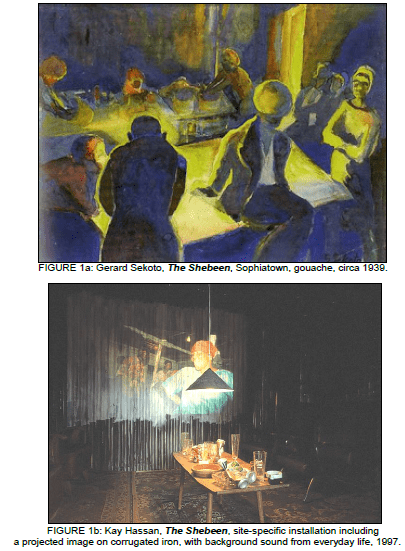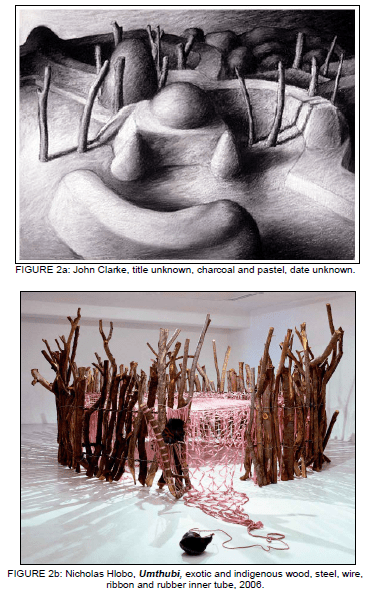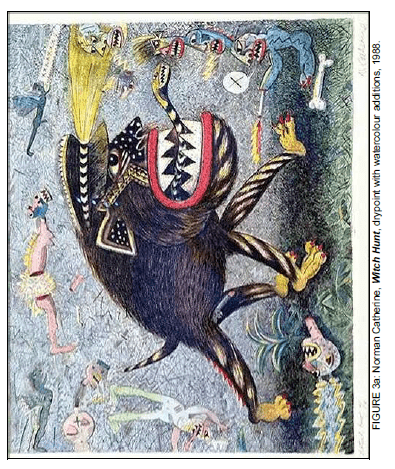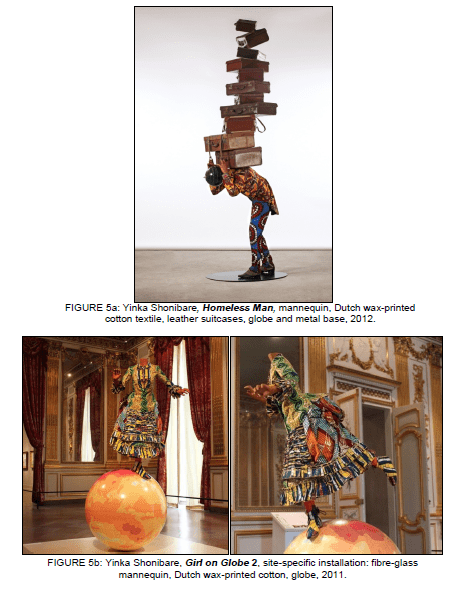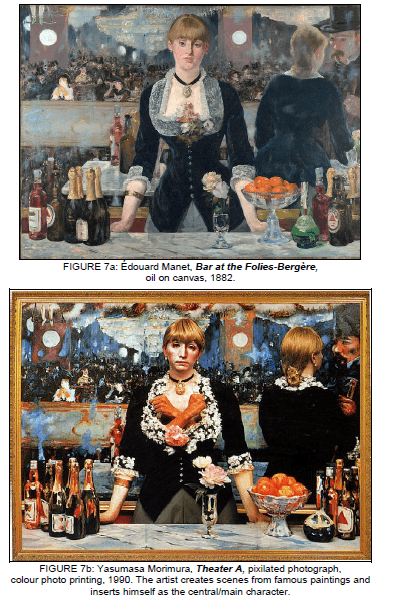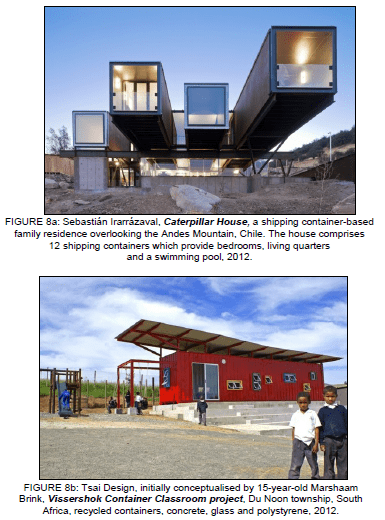VISUAL ARTS P1 Past Paper FEBRUARY/MARCH 2016 - GRADE 12 NATIONAL SENIOR CERTIFICATE
Share via Whatsapp Join our WhatsApp Group Join our Telegram GroupINSTRUCTIONS AND INFORMATION
In this examination you must demonstrate the following skills:
- The use of the correct art terminology
- The use and implementation of visual analysis and critical thinking
- Writing and research skills within a historical and cultural context
- The placing of specific examples into a cultural, social, political and historical context
- An understanding of distinctive creative styles
Read the following instructions before deciding which questions to answer.
- This question paper consists of EIGHT questions.
- Answer any FIVE questions for a total of 100 marks.
- Number the answers correctly according to the numbering system used in this question paper.
- Questions appear on the left-hand pages, with visual sources on the right-hand pages.
- Ensure that you refer to the visual sources reproduced in colour where required.
- Information discussed in one answer will NOT be credited if repeated in other answers. Cross-referencing of artworks is permissible.
- Name the artist and title of each artwork you discuss in your answers. Underline the title of an artwork or the name of a building.
- Write in a clear, creative and structured manner, using full sentences and paragraphs according to the instructions of each question. Listing of facts/tables is NOT acceptable.
- Use the following guidelines for the length of your answers. Note the mark allocation:
- 6–8 marks: a minimum of ½–¾ page (paragraph)
- 10–14 marks: a minimum of 1–1½ page(s) (short essay)
- 20 marks: a minimum of 2 pages (essay)
- Write neatly and legibly.
GLOSSARY
Use the following glossary to make sure you understand how to approach a particular question.
Analyse: A detailed and logical discussion of the formal elements of art, such as line, colour, tone, format and composition of an artwork.
Compare: Point out differences and similarities in an ordered sequence within the same argument.
Contemporary: Cutting-edge art from around the 1970s to the present day.
Contextualise:Relating to, or depending on the framework of information; relating to the situation, time/era and location to which the information refers.
Discuss: Present your point of view and give reasons for your statements.
Explain: Clarify and give reasons for your statement.
Formal elements of art: The basic elements used to create a work of art, such as line, shape, tone, texture, colour, space, composition, et cetera.
Interpret: Analyse and evaluate (give an informed opinion of) an artwork. Contextualise it historically, culturally, socially, politically, et cetera and substantiate your findings by referring to similar specific examples.
State: Give exact facts and say directly what you think – give your opinion, as well as an explanation.
Substantiate: To support/motivate with proof or evidence.
Visual sources: The reproduced images that are provided in this question paper or referred to in other sources.
ANSWER ANY FIVE QUESTIONS.
QUESTION 1: THE VOICE OF EMERGING ARTISTS
| Both artworks in FIGURE 1a and FIGURE 1b bear the title of Shebeen. This reflects how artists perceive their social, everyday living. 'Shebeen' is a popular term used for an informal social gathering or a drinking venue. |
1.1 Refer to FIGURE 1a and FIGURE 1b and write a paragraph in which you discuss the following:
- Choice of colour and its impact on the viewer
- Use of light in FIGURE 1a and FIGURE 1b
- Use of the human figure in each artwork
- The mood/story/message reflected in each artwork (8)
1.2 Discuss the work of any TWO artists you have studied which reflect and depict everyday living, working and social conditions in South Africa.
Use the following as a guideline:
- Names of artists and titles of works
- Formal art elements
- Subject matter
- Style
- Inspiration and influences
- Messages/Meaning (12)
[20]
QUESTION 2: SOUTH AFRICAN ARTISTS INFLUENCED BY AFRICAN AND/OR INDIGENOUS ART FORMS
| John Clarke is interested in the landscape and history of man in Southern Africa. Nicholas Hlobo's artwork explores, celebrates and relates to his heritage and culture as a South African. |
2.1 In the form of a paragraph, discuss the following with regard to the visual sources in FIGURE 2a and FIGURE 2b:
- Visual similarities
- Use of different media and techniques
- The use of line, circles/circular shapes and the repetition thereof
- The way in which the artworks refer to African/indigenous art forms (8)
2.2 Write an essay in which you make specific reference to the artworks of any TWO artists you have studied that portray their African heritage.
Your essay should include the following:
- Names of artists and titles of artworks
- Subject matter and content
- Stylistic approach
- Influences on their work
- Messages/Meaning (12)
[20]
QUESTION 3: SOCIOPOLITICAL ART, INCLUDING RESISTANCE ART OF THE 1970s AND 1980s
| Artists often use various images as symbols to comment on sociopolitical issues. |
3.1 With reference to the above statement, study the image in FIGURE 3a and write a paragraph in which you consider the following:
- Subject matter and the use of imagery
- Focal point
- Use of colour/tone
- Possible symbolism
- Style and technique – consider the manner in which the figures have been represented
- Scale/Proportion (8)
3.2 In the form of an essay, discuss TWO relevant artworks that deal with oppression and trauma.
Include the following in your answer:
- Name(s) of the artists and titles of works
- Subject matter/Theme
- Possible issues addressed in the works
- Style of the works
- Use of formal art elements such as colour, line, texture, et cetera
- Use of media and technique (12)
[20]
| Drypoint: A printmaking technique in which an image is incised into a metal/copper plate with a hard needle with a sharp metal or diamond tip. It produces a soft print. |
QUESTION 4: ART, CRAFT AND SPIRITUAL WORKS MAINLY FROM RURAL SOUTH AFRICA
| A prophet is a person who speaks by divine inspiration or acts as an interpreter through whom the will of a god is expressed. |
4.1 Write a short essay in which you discuss the portrayal of the spiritual imagery in FIGURE 4a and FIGURE 4b.
Use the following as a guideline in your discussion:
- What is the prophet doing in each of these works?
- Composition
- Style
- Focal point
- Depth and perspective
- Mood
- Messages/Meaning (10)
4.2 Write a short essay on TWO South African artists whose work was influenced by their rural and/or spiritual background.
Your essay should include the following:
- Name of the artists and titles of works
- Use of art elements
- Use of material and techniques
- Influences on the artworks
- Style
(10)
[20]
QUESTION 5: MULTIMEDIA AND NEW MEDIA – ALTERNATIVE CONTEMPORARY AND POPULAR ART FORMS IN SOUTH AFRICA
| FIGURE 5a and FIGURE 5b portray Yinka Shonibare's installation works in which he visually portrays a 'balancing act.' |
5.1 Analyse the artworks in FIGURE 5a and FIGURE 5b by using the following guidelines:
- The three-dimensional aspect of each work
- Differences and similarities
- Use of costumes
- Lack of heads
- Refer to the words of 'balancing act' above and explain the possible messages/meanings of the artworks. (10)
5.2 Write an essay in which you discuss any TWO artworks you have studied, in which the artist(s) used multimedia in a contemporary manner.
Use the following as a guideline:
- Name(s) of artist(s) and titles of works
- Content and use of materials and techniques
- The use of new media/multimedia to add value to the meaning of the artworks
- Possible messages the artworks convey (10)
[20]
QUESTION 6: POST-1994 DEMOCRATIC IDENTITY IN SOUTH AFRICA
| Artworks tell stories about people's life style and identity. |
6.1 Both artworks in FIGURE 6a and FIGURE 6b tell a story. Write a paragraph in which you elaborate on this statement.
You may use the following guidelines:
- Subject matter/Imagery
- Composition and focal point
- How the use of the medium adds interest to the artwork
- Possible messages and themes (8)
6.2 In the form of an essay, discuss the work of any TWO relevant South African post-1994 democratic artists that explore their identity.
You must use the following guidelines:
- Names of the artists and titles of the artworks
- Subject matter/Themes
- Media/Techniques and materials used
- Formal art elements
- Possible meanings (12)
[20]
QUESTION 7: GENDER ISSUES: MASCULINITY AND FEMININITY
| Artists portraying gender issues in their work often feel strongly about prejudiced ideas of society and the expected roles of the male and female. |
7.1 Compare the visual sources in FIGURE 7a and FIGURE 7b.
Your discussion/comparison must follow the guidelines below :
- The portrayal of the female FIGURE in 7a and FIGURE 7b
- Comment on the reflection in the mirror in each artwork
- How do the artists address masculinity and femininity within their works? Give reasons for your answer. (6)
7.2 In an essay, discuss the work(s) of any TWO artists you have studied whose work(s) comment on gender issues.
You may use the following:
- Names of artists and titles of works
- Portrayal of gender issues
- Contemporary elements and images used
- Media and techniques (14)
[20]
| Prejudiced: Unfair, biased or opinionated |
QUESTION 8: ARCHITECTURE IN SOUTH AFRICA
| Prefabricated homes are a reliable and intelligent solution for both us and our children, in which we face the challenges of ecology, economy and energy. |
8.1 Use the following guidelines and discuss FIGURE 8a and FIGURE 8b:
- Give valid reasons why you find the buildings in FIGURE 8a and FIGURE 8b inspiring.
- Why has the building in FIGURE 8a been cantilevered out over the site?
- What could be the reason for building the interesting roof in FIGURE 8b? (6)
8.2 Write an essay in which you discuss at least TWO buildings/structures where the architect(s) found solutions to new challenges.
The following should be included in your discussion:
- Names of buildings and architects
- Influences
- Time and cost
- Function and site
- Environmental effects
- Use of materials and construction methods (14)
[20]
| Prefabricate: To manufacture a building or section of a building in advance |
TOTAL: 100
